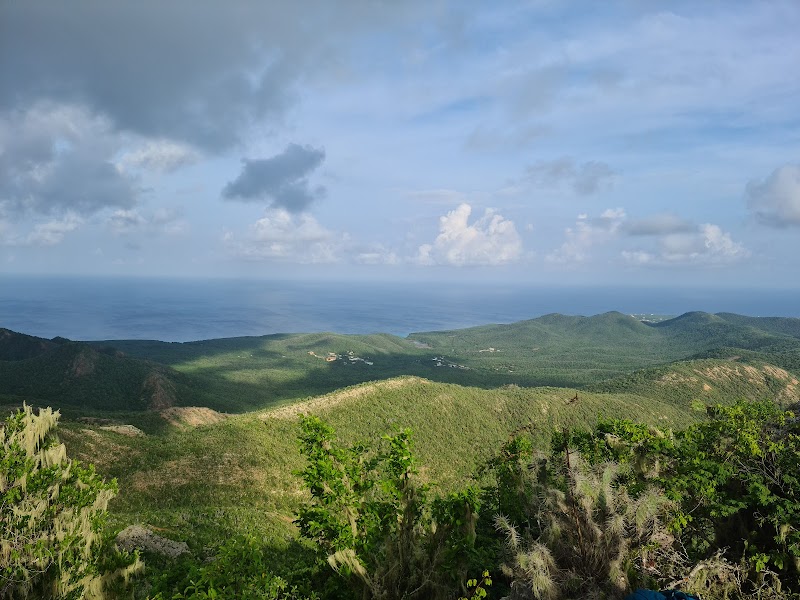Best Coastal Hikes and Cliff Viewing Spots Around Curaçao: Combining Land and Sea Adventures
Curaçao’s rugged coastline beckons with hikes that combine dramatic cliff views and vibrant marine life. Whether trekking challenging cliffs or exploring gentle coastal loops, adventurers can experience the dynamic meeting of land and sea while gaining practical tips for a safe and rewarding journey.
Hydrate Continuously
The island’s sun and wind can quickly sap your energy; carry at least 2 liters of water and sip regularly throughout your hike to avoid dehydration.
Footwear with Grip
Opt for hiking shoes or trail runners with sturdy soles. The rocky and sometimes slick coastal rocks demand traction to keep you steady and safe.
Start Early
Temperatures rise fast during midday. Begin hikes before 8 a.m. to enjoy cooler conditions and softer light for scenic photography.
Respect the Ocean’s Edge
The Atlantic waves can be powerful and unpredictable near cliffs. Keep a safe distance from unstable edges and never turn your back on the water.
Best Coastal Hikes and Cliff Viewing Spots Around Curaçao: Combining Land and Sea Adventures
Curaçao’s coast is a rugged classroom where land and sea meet with relentless energy. The island’s coastal hikes offer a direct encounter with this fierce union, tracing paths that hover above waves daring you to look deeper. Each trail blends salt-tinged air and rocky terrain underfoot with panoramic views that stretch well beyond the horizon. These hikes aren’t gentle strolls—they demand attention to footing, steady hydration, and respect for the terrain that shifts between sun-baked cliffs and forested enclaves.
Start with the hike to Shete Boka National Park, where trails cover roughly 4 miles with manageable elevation gains of up to 150 feet. The path follows the coastline’s blunt edges, where Atlantic currents crash against limestone caves that seem to breathe with the ocean’s rhythm. Walking here, the sea feels alive, pushing forward, churning into hidden bokas—narrow inlets carved by storms. Footwear with a firm grip is critical; some sections can be slick with ocean mist.
The trail to Christoffel Mountain’s lesser-known coastline viewpoint adds a half-day adventure combining inland climbs and coastal panoramas. Though a bit challenging, with a 2,600-foot elevation climb, it rewards hikers with sweeping views of cactus-covered cliffs dropping sharply into turquoise waters. The terrain alternates between jagged rock and surprising greenery. Early morning is the best time to aim for, avoiding midday heat and capturing sharp shadows that carve the landscape in photographs.
For a shorter option, Curaçao’s Playa Kalki offers a scenic 1.5-mile coastal loop with rocky outcrops and cliffside ledges that present perfect vantage points for watching the sea’s pulse. This hike is moderate, mostly flat but with uneven surfaces requiring steady steps. Pairing land travel with snorkeling just off the cliffs can amplify the adventure—marine life thrives beneath the waves, and the water’s clarity lets you witness it almost effortlessly.
Each trail presents opportunities to learn from the environment. The wind carries stories of waves beating relentless drums against the shores; coastal vegetation clings firmly to the soil, as if daring you to test its grip. It’s a call to move deliberately and prepare practically. Bring plenty of water, wear sun protection, and consider timing hikes to catch cooler hours.
Curaçao’s coastal hikes merge rugged physicality with breathtaking encounters. They invite all from casual wanderers to seasoned adventurers to engage with a landscape fiercely itself—one that demands respect, rewards endurance, and opens eyes to the interaction of sea and land in powerful ways.
Nearby Trips
All Adventures
Boat Charters
Water Activities
Adventures near Willemstad
Discover the unique and memorable adventures that make Willemstad special.
Frequently Asked Questions
Are the trails well marked around Curaçao’s coast?
Many coastal trails are marked but can be faint in some areas, especially near rocky outcrops. Carrying a GPS device or map is advisable, and local guides can provide valuable route knowledge.
Is swimming or snorkeling safe near the cliff areas?
Yes, in designated snorkeling spots like near Playa Kalki, but caution is essential. Strong currents and waves near cliffs can be dangerous. Always enter the water from safe access points and avoid swimming alone.
What wildlife might I encounter on coastal hikes?
Birds such as brown pelicans and frigatebirds patrol the skies, while iguanas bask on rocks. In the water, you might spot sea turtles or colorful reef fish just offshore.
Can I hike these trails year-round?
Yes, but conditions vary. The dry season (winter) is generally the easiest for hiking. Summers bring heat and humidity, so plan accordingly and favor early starts.
Are there any cultural or historical sites along these coastal hikes?
Certain areas near the coast, like Shete Boka, have historical significance linked to Curaçao’s past maritime activity and traditional fishing practices, offering a glimpse into local heritage.
What environmental practices should hikers follow here?
Stay on marked paths to prevent erosion, avoid disturbing native plants and wildlife, and carry out all trash. The coastal ecosystem is fragile and demands mindful respect.
Recommended Gear
Trail Hiking Shoes
Offers necessary traction for rocky, uneven coastal terrain.
Sun Protection (hat, sunscreen)
Protects against intense sun exposure especially during midday.
Hydration Pack or Water Bottles
Ensures consistent hydration on exposed trails.
Light Windbreaker
Useful for coastal wind gusts that can cool exposed sections.
Local Insights
Hidden Gems
- "The secluded Boka Wandomi inlet, accessible via a rugged trail, offers quiet tide pools and goosebump-inducing waves."
- "A small cave near Grote Boka, where echoes capture the ocean’s force in an almost theatrical display."
Wildlife
- "Aruban whiptail lizards sun themselves on coastal rocks."
- "Occasional sightings of humpback whales off the coast during migration periods."
History
"Coastal areas served as lookout points for early settlers and pirates, with some natural caves reportedly used as shelters by indigenous peoples."

